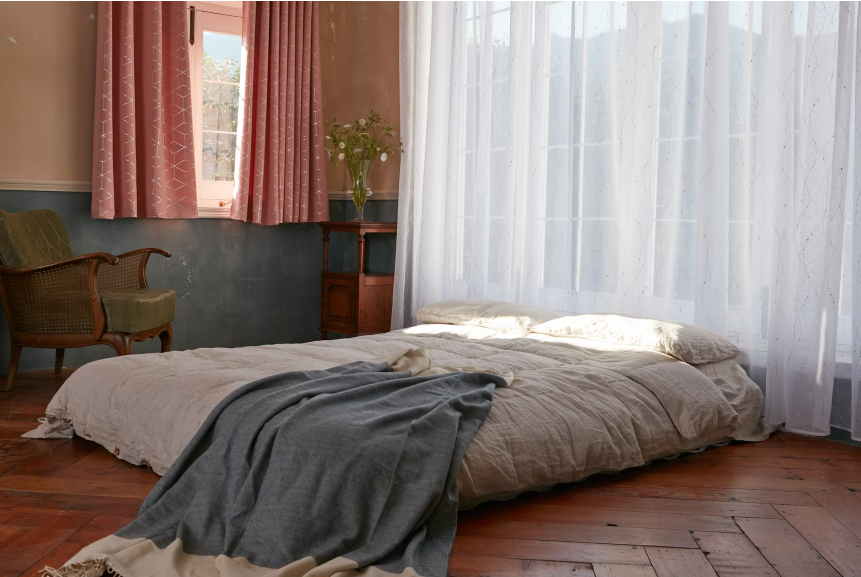
Window treatments are more than just functional elements; they are key design components that can completely transform the ambiance of any room. Choosing the right window treatments can elevate a space, offering both aesthetic appeal and practical benefits. This guide explores the various types of window treatments and how to select the perfect ones to enhance your interiors.
Understanding the Role of Window Treatments
Window treatments serve multiple purposes. They provide privacy, control natural light, offer insulation, and contribute to the overall aesthetic of a room. The right window treatment can tie a room’s decor together, making it look cohesive and well-designed.
Enhancing Aesthetics
Window treatments can act as a focal point or complement the existing decor. From luxurious drapes to minimalist blinds, the choice of material, color, and style can significantly impact the room’s visual appeal.
Controlling Light
Different window treatments offer varying levels of light control. Blackout curtains are ideal for bedrooms, ensuring a good night’s sleep, while sheer curtains allow natural light to filter through, creating a bright and airy atmosphere.
Providing Privacy
Privacy is a crucial consideration, especially in urban settings or ground-floor rooms. Options like frosted window films or layered treatments (combining blinds and curtains) can provide the necessary privacy without compromising on style.
Improving Energy Efficiency
Window treatments can also contribute to energy efficiency. Insulating materials like cellular shades help maintain indoor temperatures, reducing the need for excessive heating or cooling.
Types of Window Treatments
There are several types of window treatments, each with its own unique characteristics and benefits. Understanding these can help in making an informed decision.
Curtains and Drapes
Curtains and drapes are versatile options available in a wide range of fabrics, colors, and patterns. They can be tailored to fit any window size and style, from classic to contemporary.
- Curtains: Lightweight and often unlined, curtains are ideal for living rooms and kitchens.
- Drapes: Heavier and lined, drapes are suitable for bedrooms and formal dining rooms, providing better insulation and light control.
Blinds
Blinds offer precise control over light and privacy. They are available in various materials, including wood, faux wood, aluminum, and vinyl.
- Vertical Blinds: Great for large windows and sliding doors.
- Horizontal Blinds: Perfect for smaller windows, offering a clean and streamlined look.
Shades
Shades are fabric window coverings that can be raised or lowered to control light and privacy. They come in several styles, such as Roman, roller, and cellular shades.
- Roman Shades: Elegant and structured, ideal for adding a touch of sophistication.
- Roller Shades: Simple and functional, suitable for modern interiors.
- Cellular Shades: Known for their insulating properties, great for energy efficiency.
Shutters
Shutters are a durable and stylish option, adding architectural interest to any room. They are available in wood, composite, and vinyl.
- Plantation Shutters: Offer a timeless look and excellent light control.
- Café Shutters: Cover the lower half of windows, providing privacy while allowing light to enter from the top.
Choosing the Right Window Treatments
Selecting the perfect window treatments involves considering several factors, including the room’s purpose, existing decor, and personal preferences.
Visiting a Store
Visiting a window treatment dealer like Blind Spot can be incredibly helpful when choosing the perfect options for your home. Dealers offer expert advice and access to a wide range of samples, allowing you to see and feel different materials and styles firsthand. They can provide professional insights into the latest trends and technologies, ensuring that you’re selecting treatments that not only match your aesthetic preferences but also meet your functional needs. Additionally, a dealer can help with precise measurements, customization options, and even installation services, ensuring a seamless and satisfactory experience from start to finish.
Assessing the Room’s Needs
Identify what the room requires in terms of privacy, light control, and insulation. For example, a bedroom might need blackout curtains for better sleep, while a living room could benefit from light-filtering shades.
Matching with Decor
Ensure the window treatments complement the room’s decor. Consider the color scheme, furniture style, and overall theme. Neutral tones offer versatility, while bold colors and patterns can make a statement.
Considering Maintenance
Different materials require varying levels of maintenance. Fabrics may need regular cleaning, while materials like vinyl and aluminum are low-maintenance. Choose according to your lifestyle and the level of upkeep you are willing to commit to.
Budgeting
Window treatments come in a wide price range. Set a budget and explore options within that range. Custom treatments offer a tailored fit but come at a higher cost, while ready-made options are more affordable.
Transforming a room with the right window treatments requires careful consideration of function, style, and practicality. By understanding the different types of window treatments and their benefits, it is possible to make an informed choice that enhances the beauty and functionality of any space. Whether opting for elegant drapes, sleek blinds, or classic shutters, the perfect window treatment can elevate a room from ordinary to extraordinary.


